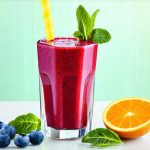Many people diligently pursue healthier diets, opting for foods marketed as beneficial—smoothies brimming with fruit, yogurt touted for its probiotics, granola promising whole-grain goodness. However, even these seemingly innocuous choices can harbor digestive triggers that lead to bloating, gas, discomfort, or more chronic issues like IBS flares. It’s a frustrating paradox: striving for wellness but inadvertently causing digestive distress. This isn’t necessarily about eliminating these foods entirely; it’s about understanding their potential pitfalls and learning how to modify them or identify personal sensitivities. Often, the issue lies not with the food itself, but with the combination of ingredients, preparation methods, or individual tolerances that are frequently overlooked in mainstream health advice.
The digestive system is a remarkably complex ecosystem, incredibly sensitive to even subtle changes. What one person tolerates beautifully might cause significant problems for another. Factors like stress levels, gut microbiome composition, and underlying health conditions all play a role. The idea of “healthy” is also subjective, often shaped by marketing trends rather than scientific nuance. This article aims to shed light on the hidden digestive triggers within commonly consumed ‘health’ foods, empowering you to make informed choices that support your individual well-being and a happy gut. We will focus specifically on smoothies, yogurt, and granola, dissecting their potential issues and offering practical strategies for mitigation.
The Smoothie Paradox: Beyond the Vibrant Colors
Smoothies are often hailed as quick, convenient nutritional powerhouses, packed with vitamins, minerals, and fiber. However, their very nature – blending everything into a liquid form – can contribute to digestive problems. The rapid consumption bypasses some of the natural chewing process that initiates digestion in the mouth, reducing enzyme exposure and potentially overwhelming the stomach. – This is especially true when large quantities are consumed quickly. Furthermore, certain ingredients commonly found in smoothies are notorious digestive offenders.
FODMAPs (Fermentable Oligosaccharides, Disaccharides, Monosaccharides, And Polyols) are short-chain carbohydrates that can be poorly absorbed by the small intestine, leading to fermentation in the colon and subsequent gas, bloating, and discomfort for sensitive individuals. Many fruits – apples, pears, mangoes, peaches – are high in fructose, a FODMAP. Similarly, ingredients like honey or agave nectar add further fermentable sugars. Combining multiple high-FODMAP ingredients in a single smoothie can significantly exacerbate symptoms. – This isn’t to say these fruits are “bad,” but rather that mindful selection and portion control are important.
Finally, the addition of protein powders, while seemingly beneficial, can also be problematic for some. Whey protein, in particular, contains lactose, which many adults struggle to digest adequately leading to bloating or diarrhea. Plant-based protein powders, although a good alternative, can sometimes contain gums (guar gum, xanthan gum) that act as thickening agents but are also fermented by gut bacteria, contributing to gas production. The key takeaway is not to avoid smoothies altogether, but to be strategic about the ingredients and portion sizes you choose.
Navigating Smoothie Ingredients: A Practical Guide
Identifying your individual smoothie triggers requires a bit of detective work. Start with a food journal, noting any digestive symptoms after consuming different smoothie combinations. Here’s how to approach ingredient selection:
- Prioritize Low-FODMAP Fruits: Berries (strawberries, blueberries, raspberries) are generally well-tolerated in moderate amounts. Bananas can be okay if slightly green, as greener bananas contain less fructose.
- Limit High-FODMAP Ingredients: Reduce or eliminate apples, pears, mangoes, peaches, honey, and agave nectar.
- Choose Protein Wisely: Opt for easily digestible protein sources like collagen peptides (hydrolyzed collagen) or consider a low-FODMAP plant-based protein powder without added gums.
- Incorporate Digestive Aids: A small amount of ginger or mint can aid digestion and reduce bloating.
Consider reducing the overall volume of your smoothie, sipping it slowly rather than gulping it down. This gives your digestive system more time to process the ingredients. Experiment with adding healthy fats – avocado or a tablespoon of nut butter – which slow down digestion and can help stabilize blood sugar levels.
The Role of Fiber in Smoothie Distress
While fiber is essential for gut health, excessive fiber intake from smoothies can be counterproductive. Blending breaks down the cell walls of fruits and vegetables, making the fiber more readily available but also potentially overwhelming the digestive system. This rapid influx of fiber can lead to gas, bloating, and even constipation in some individuals.
- Focus on whole food sources of fiber whenever possible – chewing your fruits and veggies activates enzymes that aid digestion.
- If you experience discomfort after consuming smoothies with a lot of fibrous vegetables like spinach or kale, try reducing the amount or blending them less thoroughly.
- Ensure adequate hydration: Fiber absorbs water, so drinking plenty of fluids is crucial to prevent constipation when increasing fiber intake.
Beyond Ingredients: Smoothie Preparation & Timing
The way you prepare and consume your smoothie matters just as much as what goes into it. Avoid adding ice unless absolutely necessary, as cold temperatures can constrict the digestive tract. Blend ingredients thoroughly but avoid over-blending, which further breaks down fiber and accelerates digestion. Timing is also important: consuming a large smoothie immediately before or during exercise can exacerbate digestive issues due to increased blood flow to the muscles and reduced blood flow to the gut.
Consider enjoying your smoothie as a mid-meal snack rather than replacing a full meal, allowing your body more time to process it. If you find that smoothies consistently cause discomfort, experiment with alternative methods of incorporating fruits and vegetables into your diet – salads, roasted vegetables, or simply eating them whole. Preparing and seasoning meals can also help improve digestion overall.
Yogurt: Probiotics & Potential Problems
Yogurt is often promoted as a gut-health superstar due to its probiotic content. However, the reality is more nuanced. While probiotics can be incredibly beneficial for digestive health, not all yogurts are created equal and lactose intolerance or sensitivity remains a significant issue for many.
The type of yogurt matters greatly. Greek yogurt, while higher in protein, often undergoes straining processes that reduce some probiotic diversity. Many commercially available yogurts contain added sugars, artificial sweeteners, and thickeners (like guar gum) that can trigger digestive symptoms. – These additives counteract the potential benefits of the probiotics. Lactose is present in all dairy products to varying degrees, even those labeled “low-lactose.”
Beyond lactose intolerance, some individuals may experience discomfort from A2 beta-casein protein found in certain types of cow’s milk. This protein can be more difficult for some people to digest than the more common A1 beta-casein protein. The fermentation process doesn’t eliminate all lactose or A2 proteins, meaning even those who believe they tolerate yogurt well might experience subtle digestive issues. The goal is to find a yogurt that supports your gut health without causing discomfort. Spaciousness in schedule can also play an important role here, reducing stress and improving digestion.
Choosing the Right Yogurt: Deciphering Labels
Navigating the yogurt aisle can be confusing. Here’s what to look for:
- Plain, Unsweetened: Avoid yogurts with added sugars, artificial sweeteners, or flavorings.
- Live and Active Cultures: Ensure the label specifically states that it contains live and active cultures, indicating the presence of beneficial probiotics.
- Minimal Ingredients: The fewer ingredients, the better. Avoid yogurts containing gums, thickeners, or artificial colors/flavors.
- Consider Alternatives: Explore alternatives like coconut yogurt, almond yogurt, or soy yogurt if you suspect dairy intolerance.
If you are lactose intolerant, consider a low-lactose or lactose-free yogurt option. However, remember that even these options may contain trace amounts of lactose. Experiment with different brands and types to find one that suits your individual tolerance.
Yogurt & the Gut Microbiome: A Two-Way Street
Probiotics in yogurt can positively influence gut microbiome diversity, but it’s important to understand that the effects are highly individualized. The strains of probiotics present in yogurt may not necessarily colonize the gut permanently – their benefits often rely on ongoing consumption. – Furthermore, your existing gut microbiome composition plays a role in how well you respond to probiotic supplementation.
To maximize the benefits of yogurt, consider pairing it with prebiotic-rich foods (like bananas or oats) that feed beneficial bacteria. Avoid consuming yogurt at the same time as highly processed foods or antibiotics, which can disrupt the gut microbiome and negate the effects of probiotics. If you experience bloating or gas after consuming yogurt, try reducing the portion size or switching to a different brand or type. Fasting and refeeding can also help support gut health over time.
Beyond Yogurt: Fermented Foods for Gut Health
Yogurt is just one example of fermented food that supports digestive health. Other options include kefir (a fermented milk drink), sauerkraut, kimchi, kombucha and miso. – These foods offer a wider range of probiotic strains and can be incorporated into your diet in small amounts to promote gut diversity. High-scent foods can sometimes negate the benefits, so be mindful.
Remember that introducing fermented foods gradually can minimize digestive upset. Start with a small serving size and observe how your body responds. The key is finding what works best for you. Foods that trigger bloating should be avoided when introducing new fermented foods. Finally, consider how personal space and reactions might affect digestion while enjoying these foods in public.


















